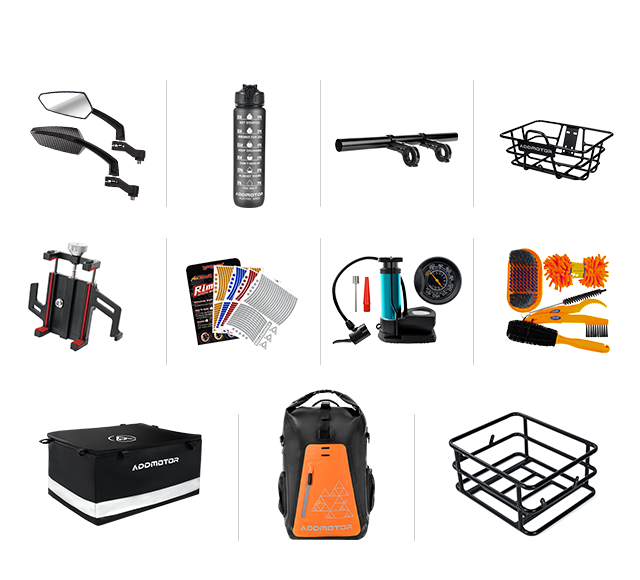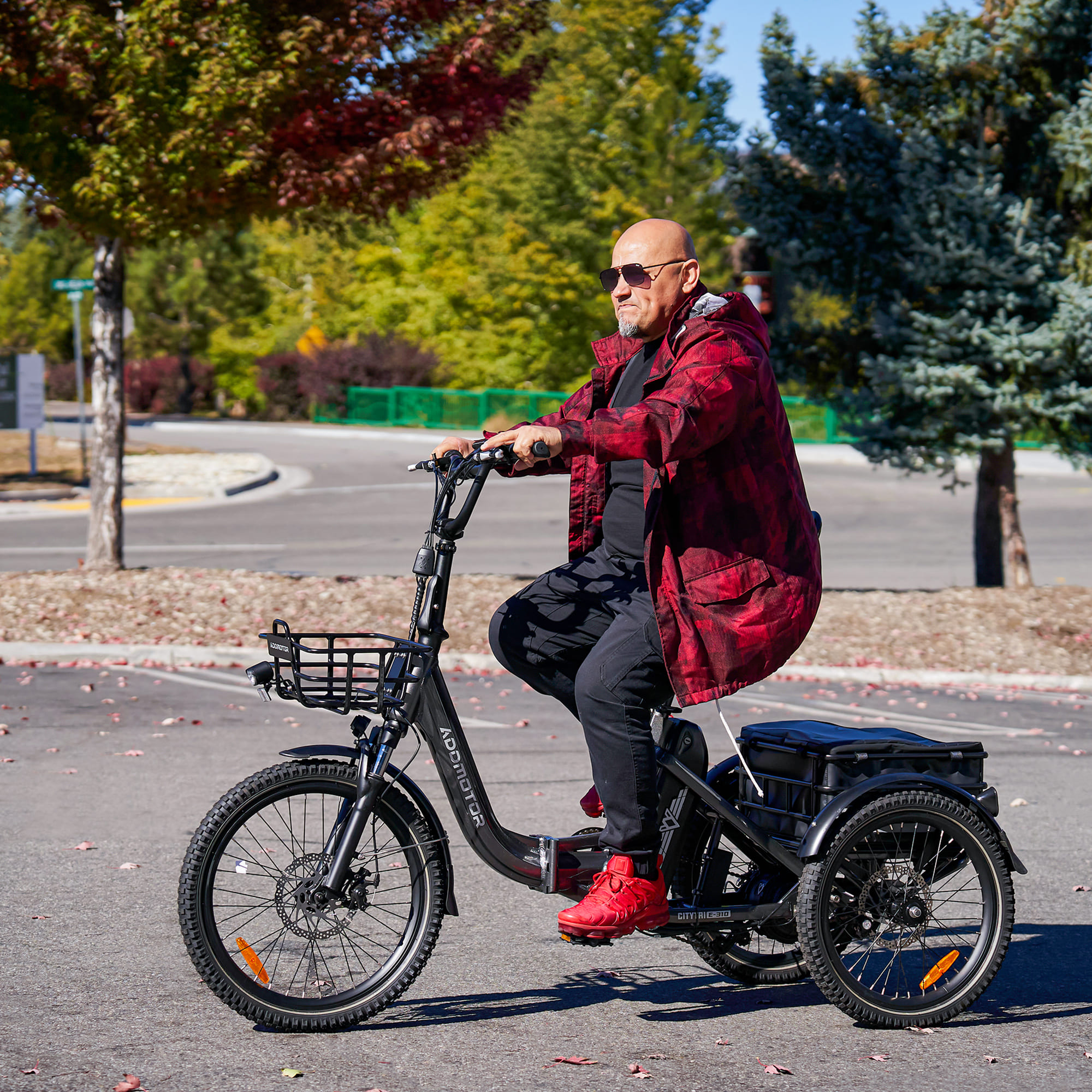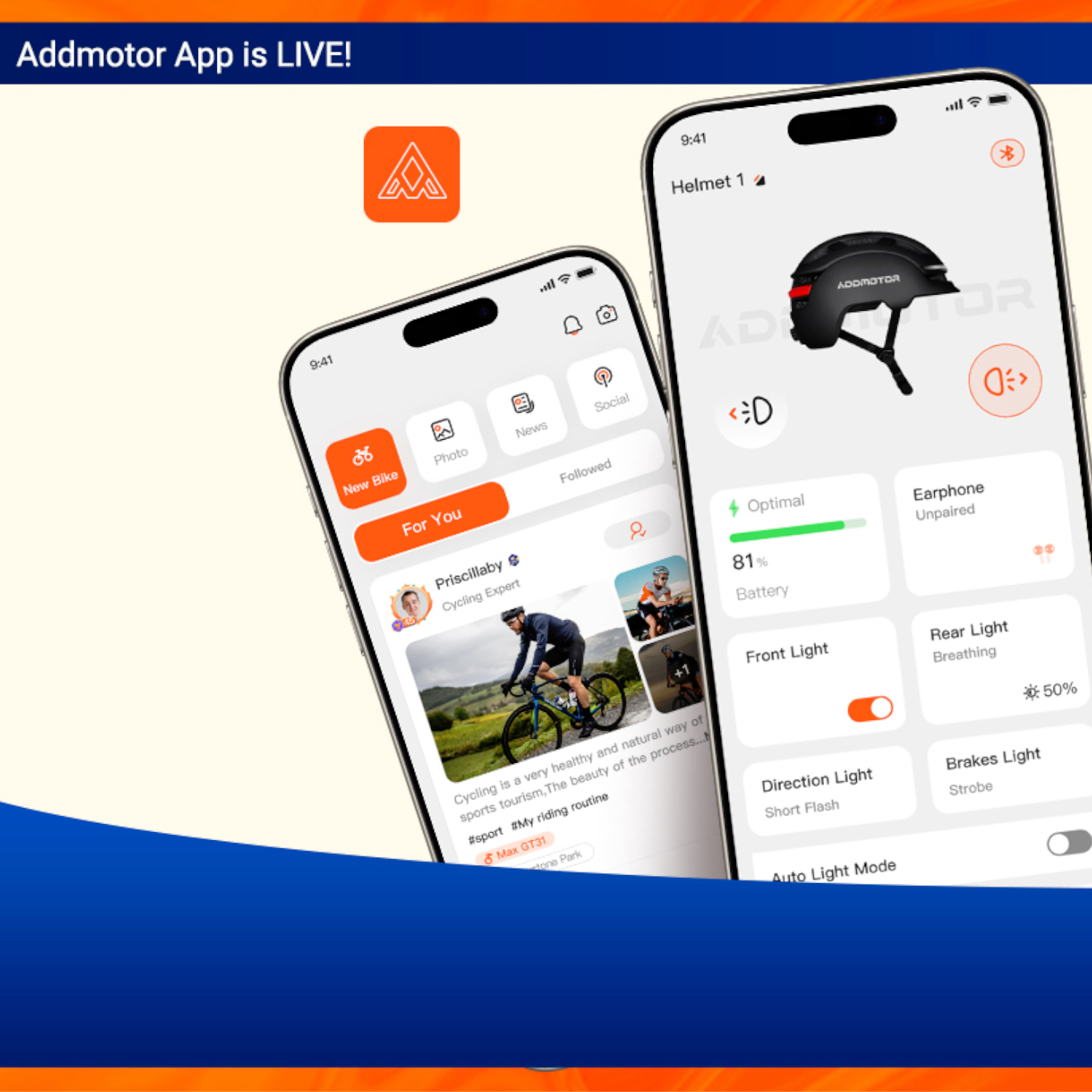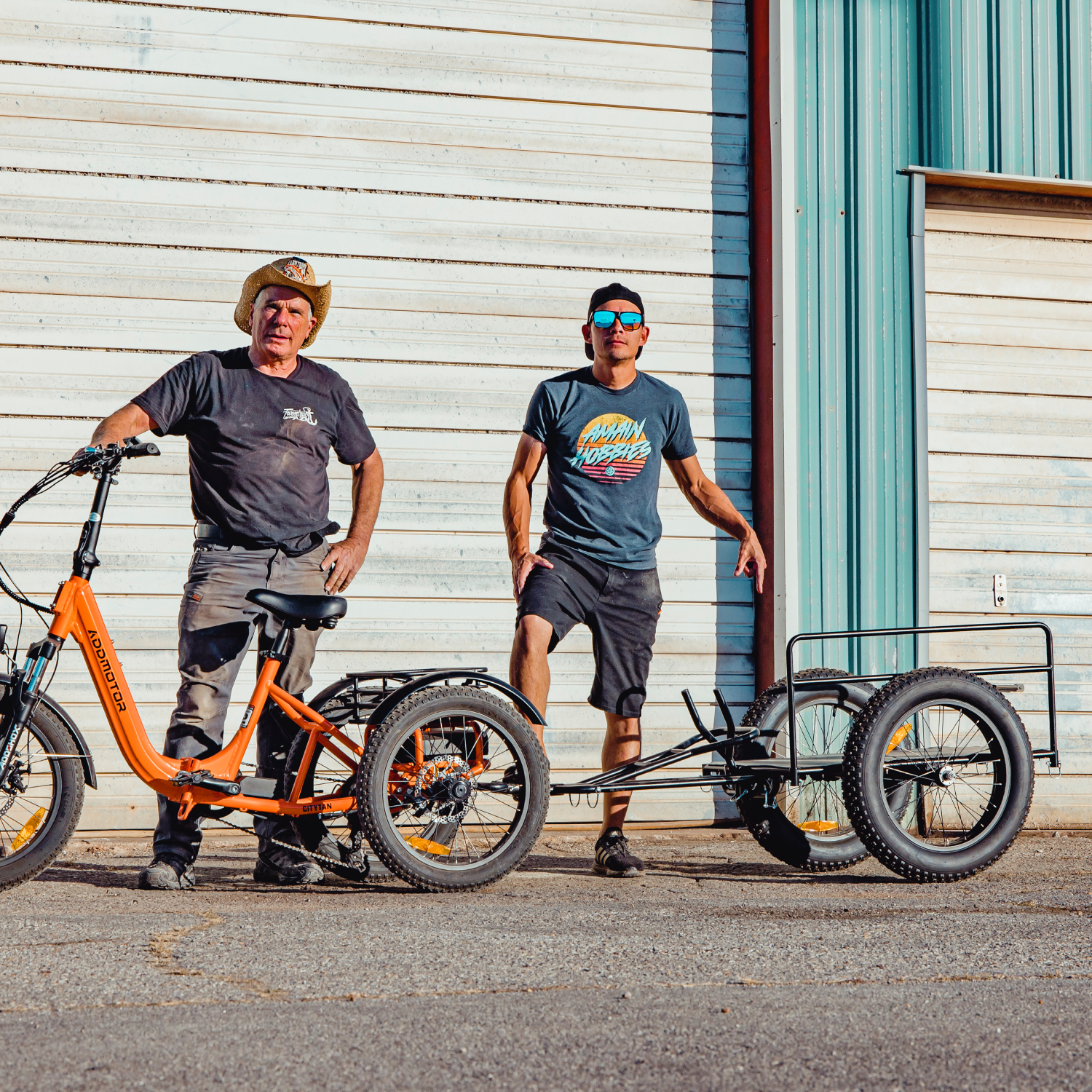On the Right Track: A Guide to Electric Trike Wheels and Tires
By Addmotor | 25 November 2023 | 1 Comments
Have you ever wondered what makes an etrike perform at its best, or why your etrike feels so good to ride? Well, a big part of that magic comes from its wheels and tires.
These days, the buzz around the fat tire etrike is growing louder, and for good reason. However, the significance of wheels and tires in maximizing their performance and popularity cannot be overstated.
So, let's roll into the realm of wheels and tires of etrikes, exploring their advantages and highlighting their crucial role in electric trikes.
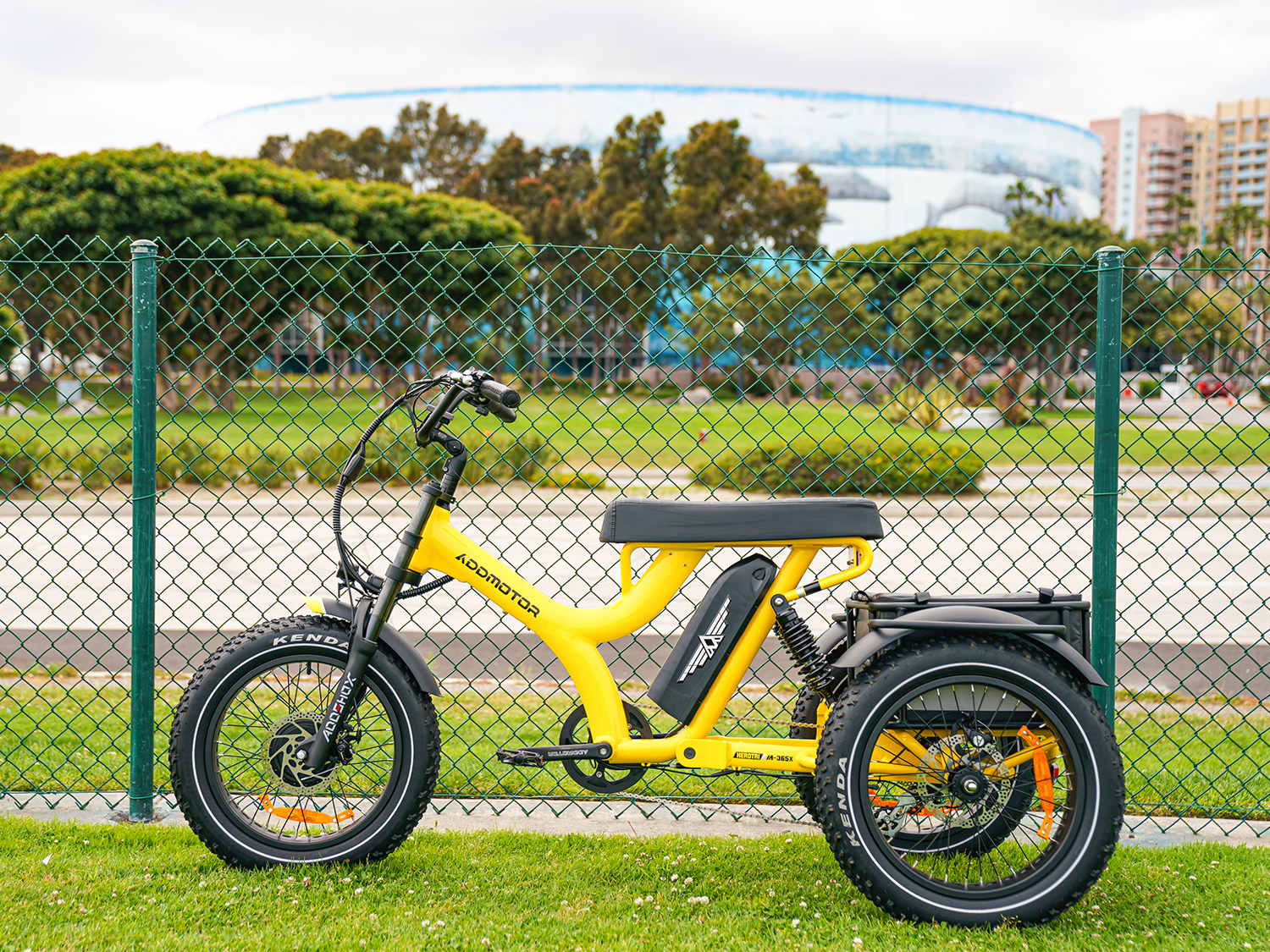
Small wheel types usually come in 16-inch to 20-inch sizes, perfect for those tight turns and narrow paths. However, they might not provide the smoothest ride over bumpy surfaces.
They can handle various terrains and conditions and have decent shock absorption and traction. They are also compatible with most tires and accessories and can accommodate different rider heights.
The benefits of 24-inch wheels are that they are fast, smooth, and safe. They can also handle any terrain and challenge with ease. However, they may be heavier and harder to maneuver than 20-inch wheels, and may not fit in some storage spaces or vehicles.
These wheels also have the best shock absorption and stability and can offer a comfortable and enjoyable ride. However, they may be too large and heavy for some riders and may require more maintenance and care than smaller wheels, such as checking the air pressure and replacing the tubes or tires frequently.
The lighter it is, the easier to move, and offers quicker acceleration, but sometimes you need something sturdy that won’t tear. While lighter wheels make your fat tire etrike more nimble, heavier ones often last longer, offer more stability, and handle tough terrains better.
City streets? Small or medium wheels.
Adventuring off-road? Large wheels might be your best bet.
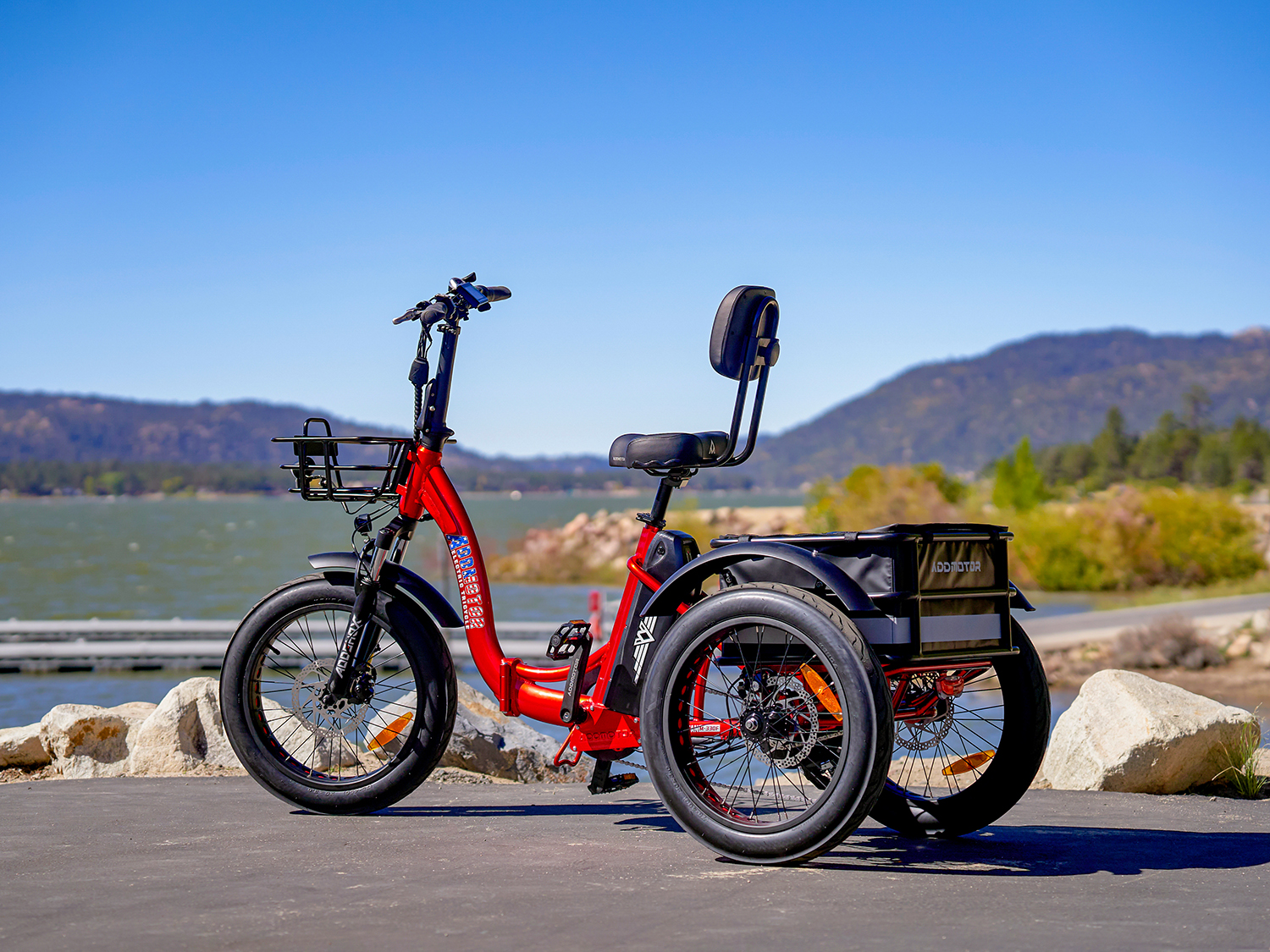
You may also like:
Comparing Different Brake Types for Electric Trikes
Demystifying Electric Tricycle Suspension Systems
However, thin tires may not be suitable for off-road or snowy conditions, as they have less traction and grip on loose or slippery surfaces. They may also have less shock absorption and comfort than fat tires, as they have less air volume and cushioning.
One of the advantages of fat tires is that they can be used in different weather conditions and seasons, such as rain, snow, or sand. They can also adapt to different tire pressures, depending on the rider's preference and needs. For example, a lower tire pressure can provide more traction and comfort, while a higher tire pressure can provide more speed and efficiency.
With brands like Kenda leading the pack, these tires provide exceptional traction and shock absorption, making every ride feel like you're gliding on clouds. Addmotor mostly uses Kenda fat tires for the best fat tire electric trike to provide riders with an elevated and reliable Etrike experience.
Kenda fat tires have some unique features and advantages, such as:
And that's a wrap on our Etrike wheels and tires guide. It's about finding that sweet spot that fits your riding style and needs.
These days, the buzz around the fat tire etrike is growing louder, and for good reason. However, the significance of wheels and tires in maximizing their performance and popularity cannot be overstated.
So, let's roll into the realm of wheels and tires of etrikes, exploring their advantages and highlighting their crucial role in electric trikes.

Types of Wheels in Electric Tricycles
Etrikes come equipped with various types and sizes of wheels, each with unique characteristics and distinct advantages. Let's explore these classifications:●Small Wheels (16" - 20")
These are the standard-sized wheels that are renowned for offering a good balance between speed, comfort, and stability. Typically made from materials that keep them light yet strong, these wheels are catered to those seeking agility in their rides.Small wheel types usually come in 16-inch to 20-inch sizes, perfect for those tight turns and narrow paths. However, they might not provide the smoothest ride over bumpy surfaces.
They can handle various terrains and conditions and have decent shock absorption and traction. They are also compatible with most tires and accessories and can accommodate different rider heights.
●Medium Wheels (24")
Medium wheels of 24” in size are the all-rounders. These wheels strike a balance between stability and maneuverability. They have a higher top speed and a smoother ride, can tackle steeper hills and rougher roads better, and also have better visibility and safety than smaller wheels.The benefits of 24-inch wheels are that they are fast, smooth, and safe. They can also handle any terrain and challenge with ease. However, they may be heavier and harder to maneuver than 20-inch wheels, and may not fit in some storage spaces or vehicles.
●Large Wheels (26" and above)
Larger wheels provide smoother rides over rough terrain and offer superior momentum once in motion. They have the highest speed and performance among all wheel sizes and can handle any terrain and challenge with ease.These wheels also have the best shock absorption and stability and can offer a comfortable and enjoyable ride. However, they may be too large and heavy for some riders and may require more maintenance and care than smaller wheels, such as checking the air pressure and replacing the tubes or tires frequently.
Factors Influencing Wheel Selection
Material Types:
• Steel Wheels: These are durable, tough, and can handle all seasons. They are a safe, natural choice that riders of all levels could fall back on. However, their heavy materials can cause some unnecessary drags.
• Alloy Wheels: These are lighter than steel wheels, facilitating better acceleration and providing more agile experiences. However, their lightweight nature can compromise the wheels’ durability.
Weight
Weight in wheels is like backpacks on a hike that affects the etrike’s maneuverability and speed.The lighter it is, the easier to move, and offers quicker acceleration, but sometimes you need something sturdy that won’t tear. While lighter wheels make your fat tire etrike more nimble, heavier ones often last longer, offer more stability, and handle tough terrains better.
Maintenance Requirements
Different wheel types require different levels of maintenance. Smaller, simpler wheels usually ask for less maintenance, while the larger or more complex ones might need more frequent check-ups. Consider the long-term maintenance costs and effort when choosing a wheel type.Individual Preferences and Usage Scenarios
Your personal preferences and where you plan to ride your fat tire etrike are some of the biggest factors that influence your choice.City streets? Small or medium wheels.
Adventuring off-road? Large wheels might be your best bet.

You may also like:
Comparing Different Brake Types for Electric Trikes
Demystifying Electric Tricycle Suspension Systems
Tire Options for Electric Tricycles
Now, let’s move on to tires. There are two main types: thin tires and fat tires.●Thin Tires
These are tires that have a narrow width, usually less than 2 inches. They are typically used for road or urban electric tricycles, as they offer low rolling resistance, high speed, and efficiency on smooth surfaces, which means you can go faster with less effort.However, thin tires may not be suitable for off-road or snowy conditions, as they have less traction and grip on loose or slippery surfaces. They may also have less shock absorption and comfort than fat tires, as they have less air volume and cushioning.
●Fat Tires
Enter the superheroes of the tire world: fat tires that have a wide width, usually more than 3 inches. These are all about stability and adaptability, offering high traction and grip for your best fat tire electric trike, especially on challenging terrains.One of the advantages of fat tires is that they can be used in different weather conditions and seasons, such as rain, snow, or sand. They can also adapt to different tire pressures, depending on the rider's preference and needs. For example, a lower tire pressure can provide more traction and comfort, while a higher tire pressure can provide more speed and efficiency.
With brands like Kenda leading the pack, these tires provide exceptional traction and shock absorption, making every ride feel like you're gliding on clouds. Addmotor mostly uses Kenda fat tires for the best fat tire electric trike to provide riders with an elevated and reliable Etrike experience.
Kenda fat tires have some unique features and advantages, such as:
► These tires are designed to resist punctures and flats and provide excellent grip and traction, ensuring better control while riding.
► Ensures a safe and reliable ride, even on rough and rocky surfaces.
► Offers durability, longevity, and superior performance.
Selecting the Ideal Tire Type
Riding Preferences
If you prefer speed and efficiency, thin tires are a great choice for your best fat tire electric trike, as they have lower rolling resistance. On the other side, if you enjoy off-road riding or exploring challenging terrains, fat tires would be more suitable due to their superior traction and stability.Weather Conditions
It’s all about matching your tires to your playground. Both thin and fat tires perform well in dry conditions. While thin tires might offer better speed and efficiency on paved roads, fat tires are designed to perform well in wet or snowy conditions, providing better grip and stability.Terrain Considerations
The terrain is like the stage for your Etrike performance. For paved roads, thin tires are your star performers. But when the road gets rocky, sandy, snowy, or muddy, it’s time for the fat tires to take the spotlight.In Summary
So there you have it, a deep dive into the world of Etrike wheels and tires. Remember, the right choice can elevate your Etrike experience from good to great. So think about your needs, weigh your options, and get ready to roll like never before.And that's a wrap on our Etrike wheels and tires guide. It's about finding that sweet spot that fits your riding style and needs.
Recently Reviews
Read MoreLeave a Reply
Your email address will not be published.Required fields are marked. *
Latest Stories

